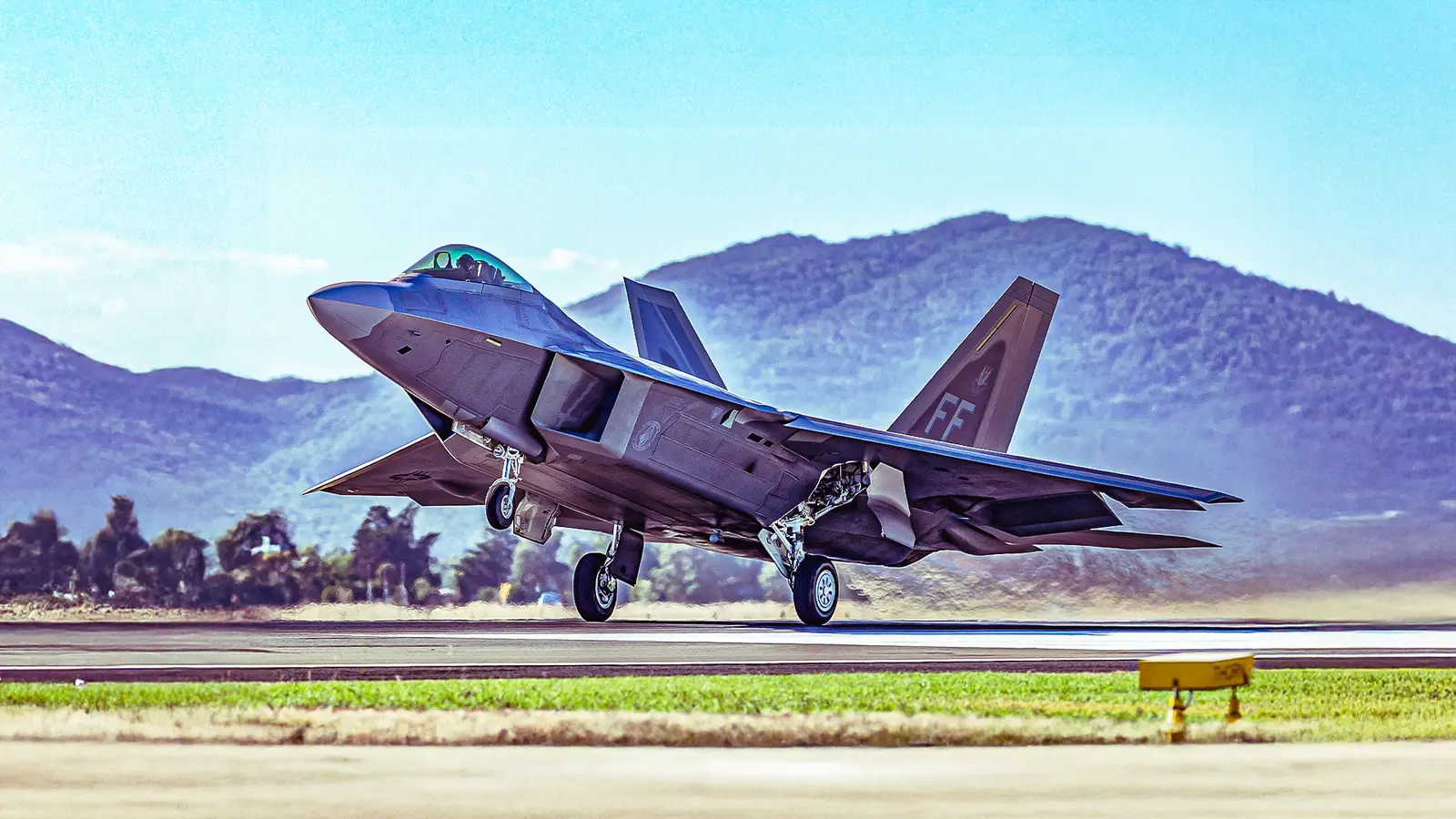
Since their debut in the skies, the Lockheed Martin F-22 Raptor and the F-35 Lightning II have captured the imagination of aviation enthusiasts, military strategists, and defense analysts alike. Both are considered crown jewels of American air power, often compared to one another as representatives of fifth-generation fighter technology. But while they share stealth, advanced avionics, and high maneuverability, their roles, designs, and futures diverge in striking ways. In our guide, we will see how the F-22 and F-35 compare, exploring their history, design philosophies, and what makes them so distinct in the modern aerial battlefield.
Unlike many simple comparisons, this article sets out not only to showcase the aircraft’s technical differences but also to explore their historical roots and operational significance. The story of these jets is also the story of American military aviation’s evolution in the late 20th and early 21st centuries, from the Cold War’s final decades to today’s era of networked warfare.
The Road To Stealth Supremacy
The origins of the F-22 and F-35 can be traced back to the US Air Force’s efforts in the 1970s and 1980s to surpass Soviet air defense technology. The introduction of stealth aircraft like the Lockheed F-117 Nighthawk in 1981 marked a major shift in air combat. Suddenly, an aircraft could avoid radar detection instead of just outmaneuvering or flying faster and higher than the opponents. The F-117’s success in the Gulf War reinforced stealth as the new benchmark for survivability.
Lockheed Martin, emerging as a leader in low-observable technology, cemented its place with the F-117 and later its partnership with Northrop Grumman on the B-2 Spirit bomber. By the late 1980s, the US Air Force issued requirements for the Advanced Tactical Fighter (ATF) program. It was the contest that would ultimately produce the F-22. Stealth, super cruise, and all-aspect maneuverability became the new holy trinity of air superiority.
This moment marked Lockheed Martin’s rise as the leading producer of fifth-generation fighters. With the ATF victory in 1991 and the subsequent Joint Strike Fighter (JSF) contract award in 2001, Lockheed became synonymous with stealth combat aviation. The F-22 and F-35 are the most notable results of this path, representing two parallel visions of air dominance: one focused on pure air-to-air superiority, the other on global versatility and coalition warfare.
The F-22 Raptor – America’s First Fifth-Generation Fighter
The F-22 Raptor officially entered service in 2005 after decades of development under the ATF program. It was designed as the ultimate air superiority fighter, capable of defeating any Soviet-designed aircraft in direct combat. The Raptor combined unique stealth, blistering Mach 2 speed, and super cruise capability, meaning that the fighter jet can fly at supersonic speeds without afterburners. The combination of these factors makes the Raptor nearly impossible for adversaries to detect and intercept, as described by the US Air Force.
At the core of the Raptor’s design is its agility. As noted by The National Interest, the F-22 is equipped with thrust-vectoring nozzles, so it can perform maneuvers that no other operational jet in the world can imitate so far. This aerodynamic superiority, combined with its stealth coatings and radar-absorbent materials, makes it a deadly opponent in dogfights or beyond-visual-range engagements. Its advanced AN/APG-77 radar provides pilots with excellent situational awareness, while its electronic warfare systems boost survivability in contested environments.
Yet, despite its impressive performance, the F-22 suffered from a fate its designers never intended: limited production. Originally envisioned as a fleet of 750 fighters, budget constraints and shifting geopolitical priorities after the Cold War reduced production to only 187 operational Raptors. This scarcity has only enhanced its mystique, making the F-22 a rare but formidable presence in the US Air Force arsenal.
The F-35 Lightning II – A Multirole Global Fighter
If the F-22 represents exclusivity and specialized dominance, the F-35 Lightning II is its polar opposite: a widely exported, versatile multirole fighter. Conceived through the Joint Strike Fighter program in the 1990s, with many NATO countries participating in this project, the F-35 aimed to replace a broad range of aging aircraft, from the F-104 Starfighter and F-16 Fighting Falcon to the AV-8B Harrier. The inclusion of short takeoff and vertical landing (STOVL) technology in the F-35B variant was particularly significant, as it provided a direct successor to the Harrier’s legendary VTOL capability, according to Lockheed Martin.
The Lightning II entered service in 2015 and has since become the backbone of Western air forces. Unlike the Raptor’s air superiority focus, the F-35 was built from the ground up as a multirole platform, equally capable of striking ground targets, engaging in aerial combat, and conducting intelligence, surveillance, and reconnaissance missions. Its cutting-edge sensor fusion and networked data-sharing capabilities make it a “quarterback in the sky,” enabling allied forces to fight as a coordinated whole, as described by the Eurasian Times.
Internationally, the F-35 has been a runaway success. Twenty eligible countries have ordered the jet, and it has quickly become a standard within NATO and allied air forces. It comes in three variants: the conventional F-35A, the STOVL F-35B, and the carrier-capable F-35C, to ensure that this aircraft can operate from land bases, amphibious assault ships, and aircraft carriers. Its adaptability and relative affordability (compared to the F-22) have made it one of the most in-demand fighters of the modern era.
A Head-To-Head Comparison
The F-22 and F-35 often appear similar to casual observers: both are stealthy, painted in gray with a special radar-absorbent paint and materials designed to reduce their radar signature, angular, and unmistakably modern 5th-generation fighters. Yet their design philosophies could not be more different. The Raptor was conceived during the Cold War to guarantee US dominance in air-to-air combat. The Lightning II, however, was designed for the networked battlespaces of the 21st century, where versatility and interoperability matter as much as raw performance.
The most striking difference lies in their roles. The F-22 is optimized for air superiority, excelling in high-speed engagements and close combat. The F-35, on the other hand, is a true multirole fighter with advanced ground-attack and intelligence-gathering capabilities. Pilots who have flown both often describe the F-22 as a “knife-fighter” and the F-35 as a “battle manager”.
Here is a closer look at their technical specifications:
F-22 Raptor vs F-35 Lightning II Specifications
Source: Lockheed Martin
Both jets deliver impressive capabilities, but their divergence reflects the distinct eras and missions they were designed for.
The Striking Differences
Despite their shared fifth-generation label, the F-22 and F-35 diverge in several key ways. Here is our list of main differences:
The F-22 was designed exclusively for air superiority, while the F-35 emphasizes multirole flexibility.
Engines: One Pratt & Whitney F135x for F-35 vs Two Pratt & Whitney F119-PW-100 engines for F-22
The Raptor boasts supercruise and thrust-vectoring for extreme agility; the F-35 relies more on sensor fusion and networked warfare.
The F-22’s production run ended at 187 aircraft, while the F-35 will see thousands produced worldwide.
Only the F-35 has carrier and STOVL variants, making it suitable for allied navies and marine forces.
The F-22 remains US-only, while the F-35 is widely exported and forms the backbone of NATO’s air power.
These differences highlight how the two visually similar jets, often compared, serve entirely different strategic roles.
Two Icons, Two Futures
The F-22 Raptor and F-35 Lightning II are not rivals so much as complementary icons of American air dominance. The Raptor remains unmatched in raw air-to-air capability; a lethal guardian designed for a world that feared Soviet swarms of fighters. The Lightning II, by contrast, is a global workhorse, designed to integrate allied forces in a networked, multirole environment that defines 21st-century warfare.
Both jets will continue to serve into the coming decades, but their futures differ. The F-22, with its limited production, is already being supplemented by the US Air Force’s Next Generation Air Dominance (NGAD) program. The F-35, meanwhile, will remain in production for years, ensuring it becomes one of the most numerous and widely used fighters in history.
In the end, the Raptor is the scalpel: sharp, precise, and devastating in its niche, while the Lightning II is the Swiss Army knife, adaptable and indispensable across multiple theaters. Together, they embody not just technological achievement but also the strategic flexibility that has kept the United States at the forefront of global air power.



